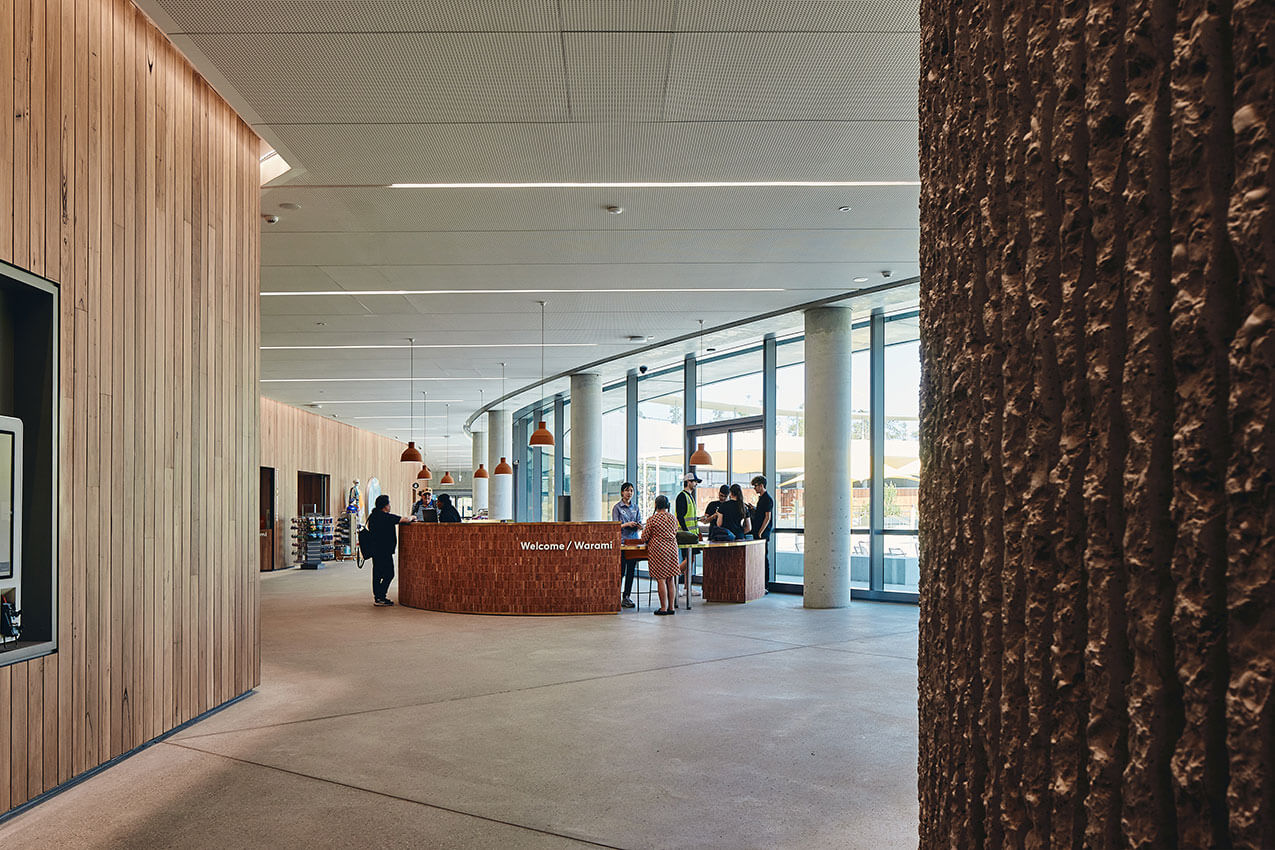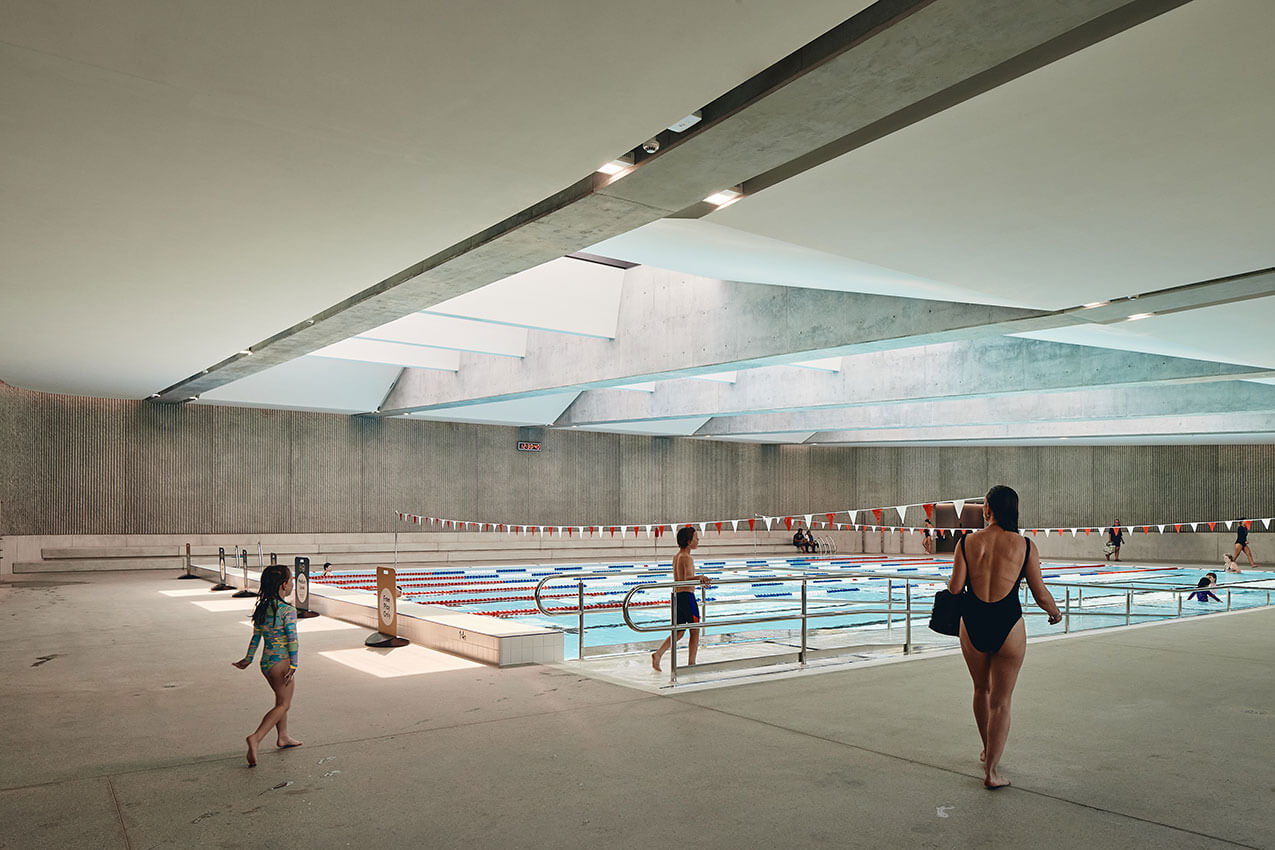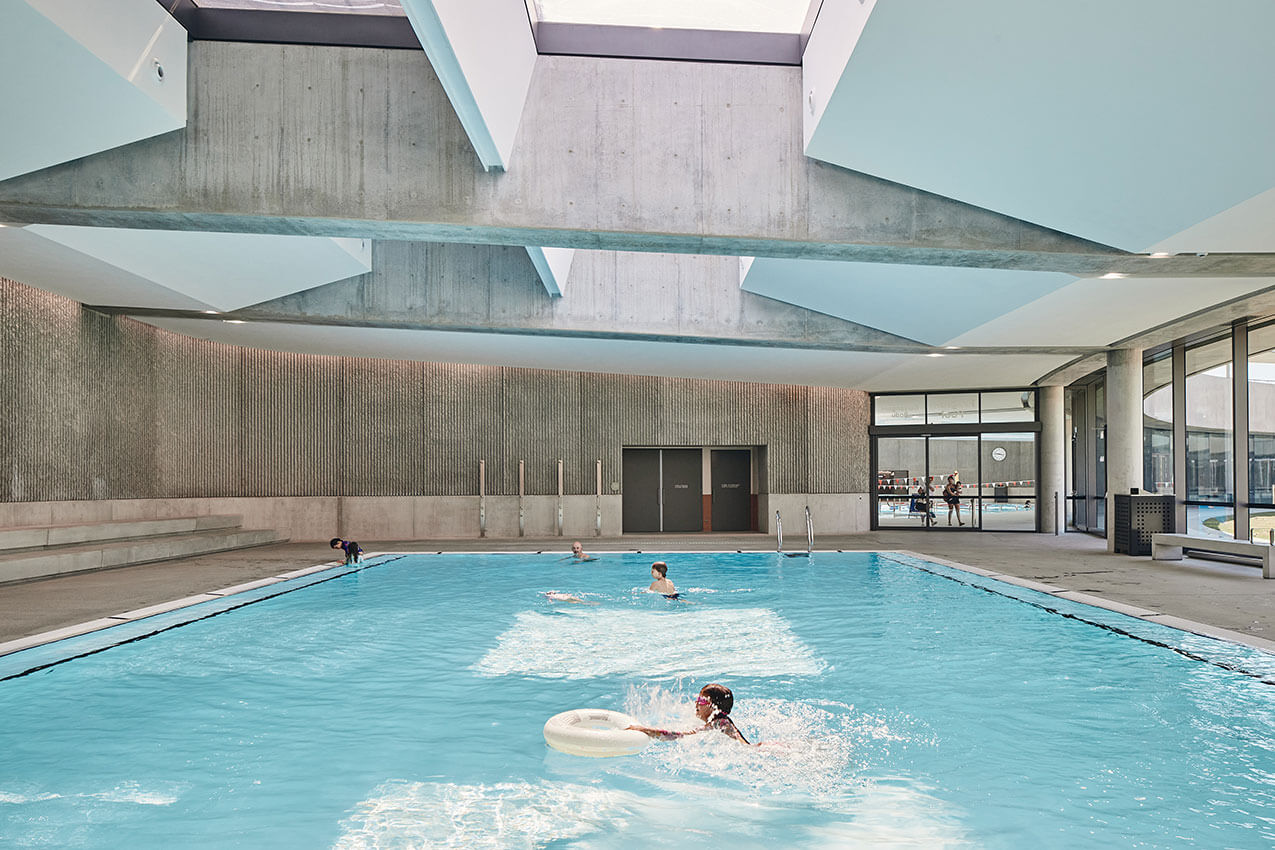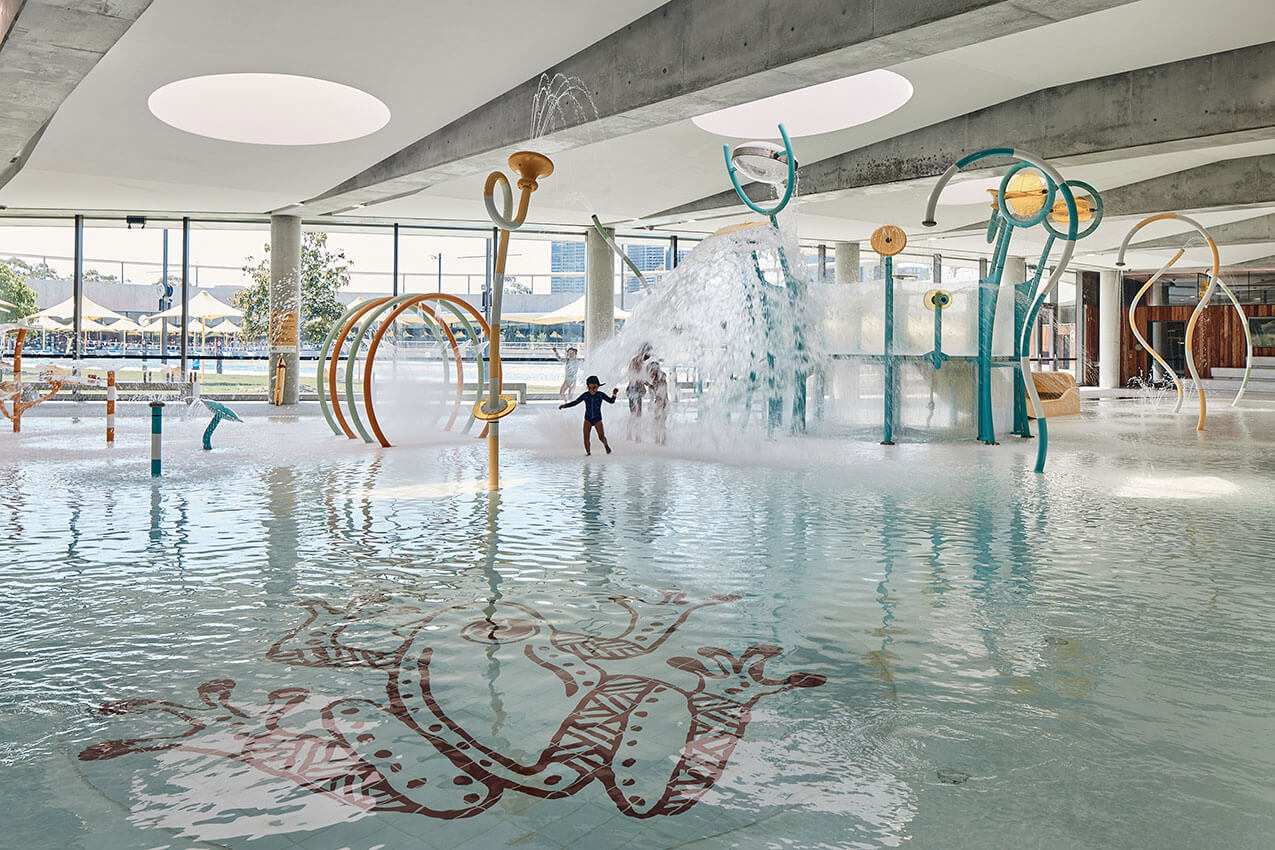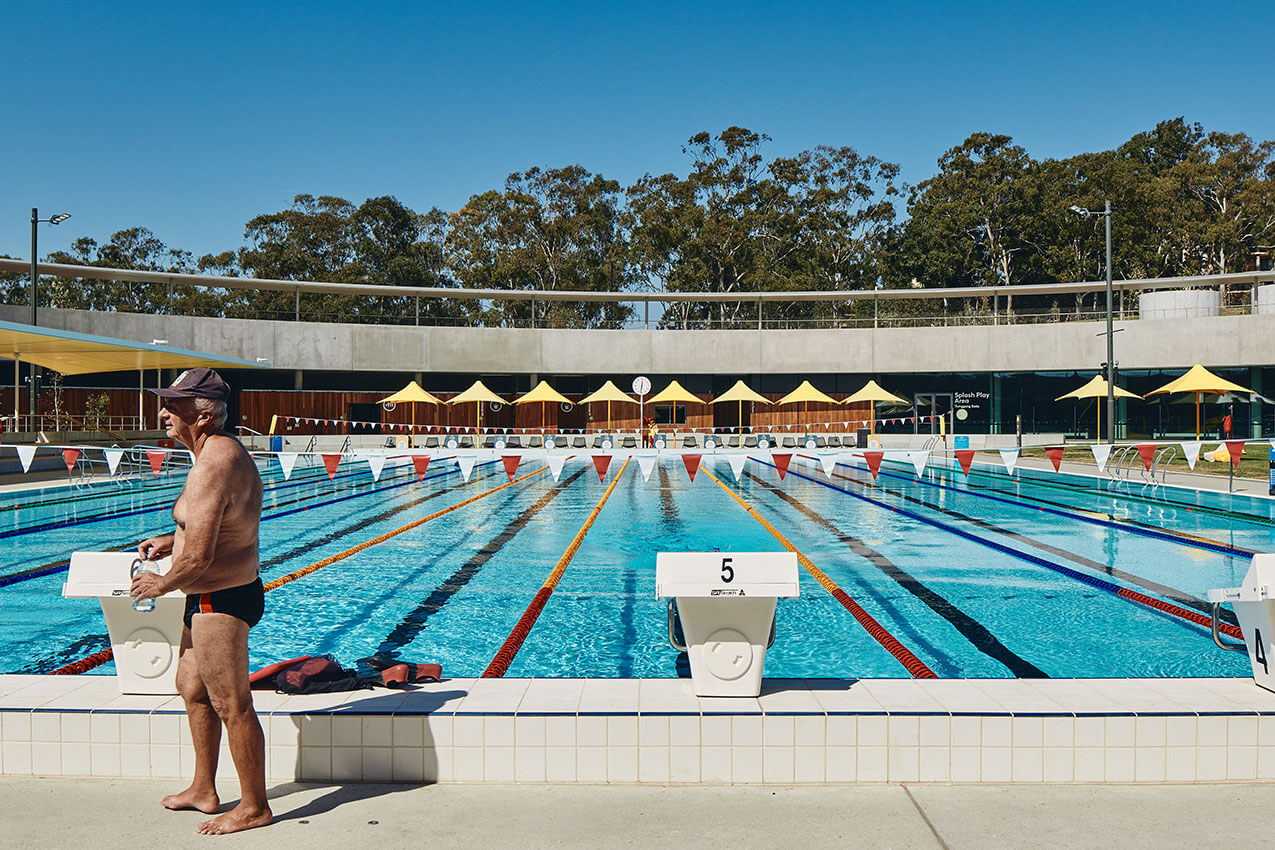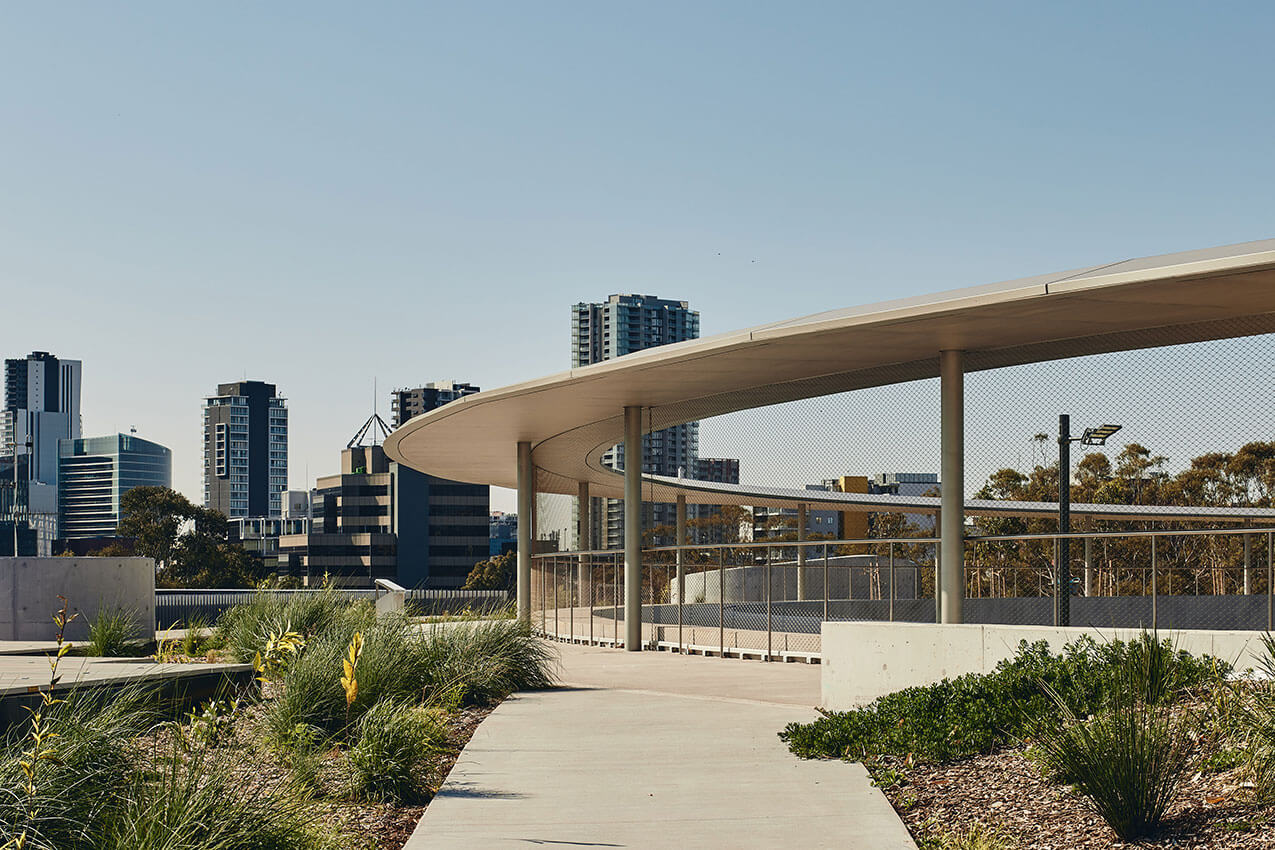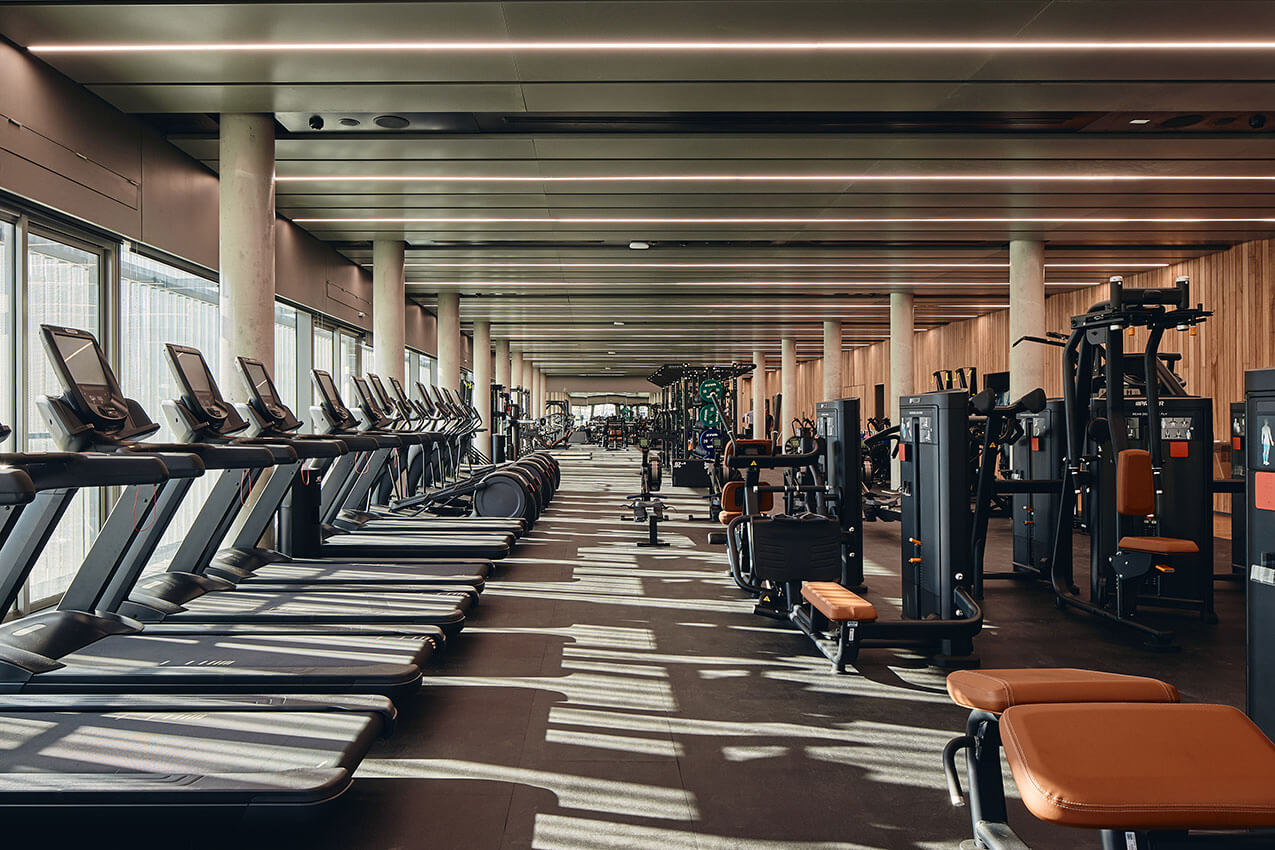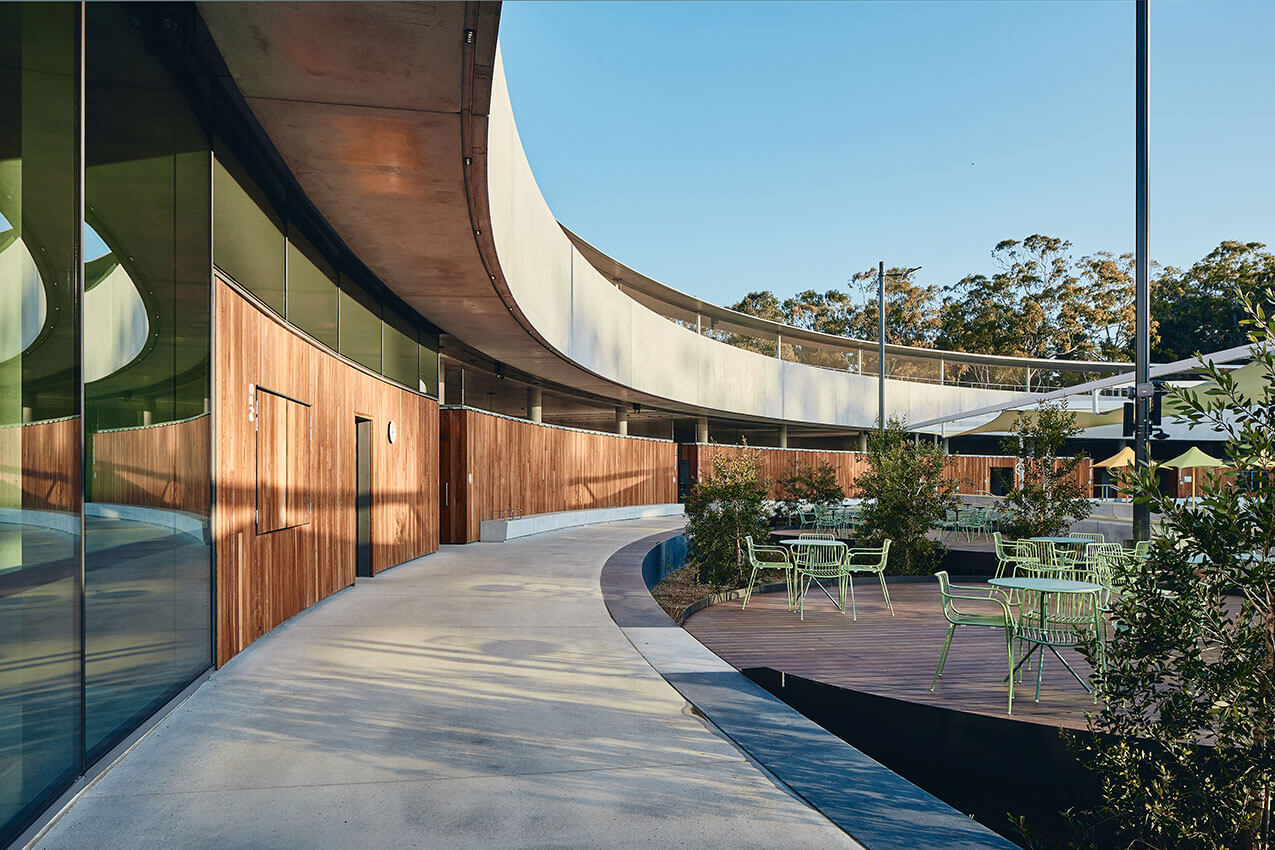Parramatta Aquatic Centre | Grimshaw and Andrew Burges Architects with McGregor Coxall
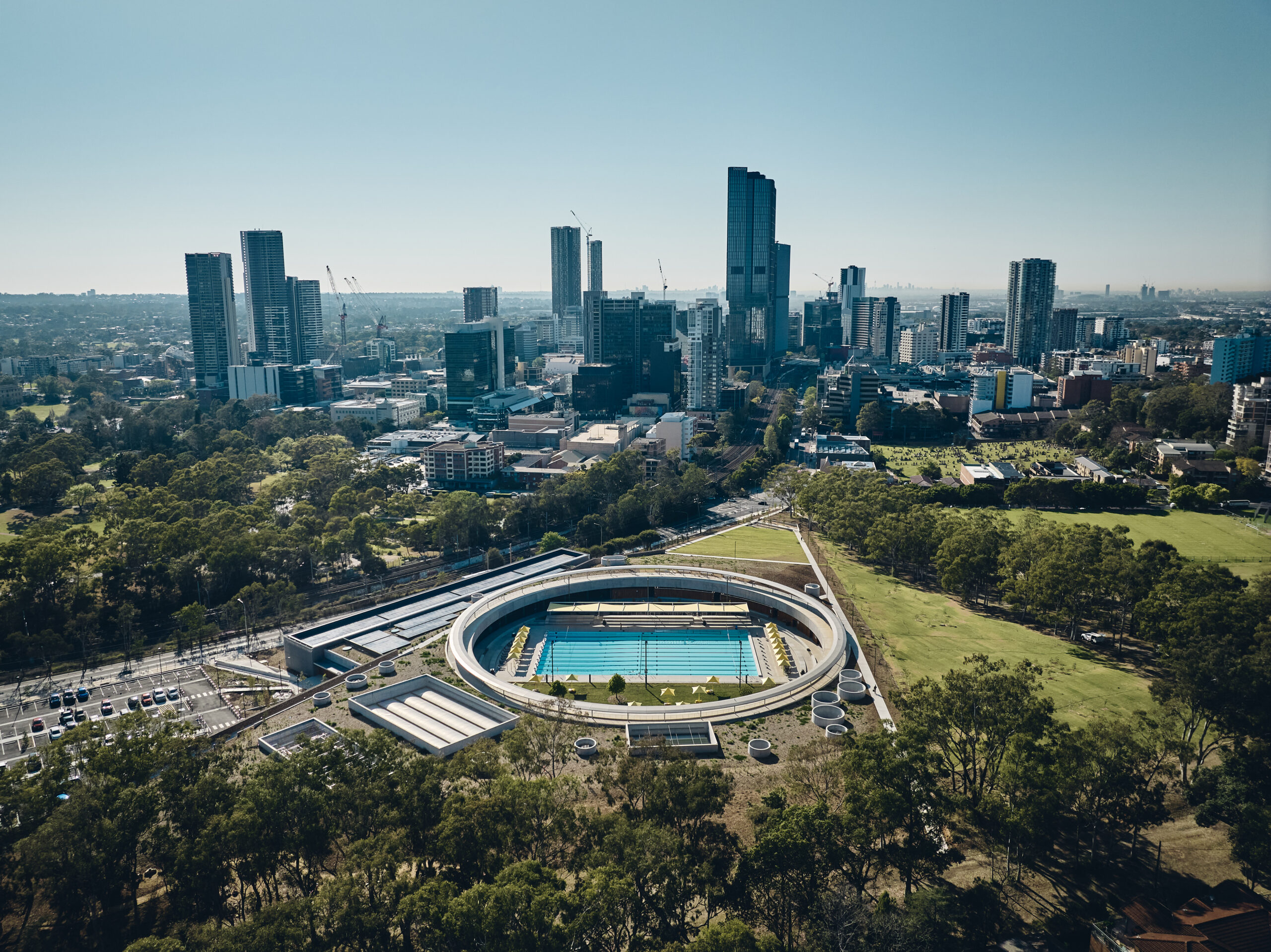
2024 National Architecture Awards Program
Parramatta Aquatic Centre | Grimshaw and Andrew Burges Architects with McGregor Coxall
Traditional Land Owners
Dharug People
Year
Chapter
New South Wales
Category
Urban Design
Builder
Photographer
Media summary
The Parramatta Aquatic Centre (PAC) is a recreational facility located in Parramatta. Situated on a 20 hectare park adjacent to the UNESCO World Heritage site of Parramatta Park and Old Government House, the centre embraces the vision of the Mays Hill Masterplan while complementing the surrounding landscape. Instead of an enclosed structure, the PAC is a connected community landscape with a sunken courtyard at its centre.
The pools appear to be carved out of the site’s topography, minimising their impact on the park. Construction materials like recycled waste, concrete, and timber were selected to blend with the environment. The design also includes First Nations interpretive elements in collaboration with local Darug elders. Sustainability was prioritised, incorporating woodland restoration, water sensitive urban design, and renewable energy. The PAC has attracted over 20,000 visitors per week since opening, offering essential swimming and recreational facilities to Western Sydney while addressing urban heat concerns.
2024 National Awards Received
The Walter Burley Griffin Award for Urban Design
2024
New South Wales Architecture Awards Accolades
The Sulman Medal for Public Architecture (NSW)
Parramatta Aquatic Centre has been thoughtfully designed with the community in mind. The architects have done a wonderful job creating a space that the people of Parramatta, and greater Sydney, can enjoy for generations to come. This is more than just a pool it’s a place where the community can swim laps in the pool, work out in the gym, relax in the spa, steam and sauna or simply enjoy a coffee in the café. A lot of memories will be made here of local kids swimming their first lap, of families splashing around together on a long, summer day.
Client perspective
